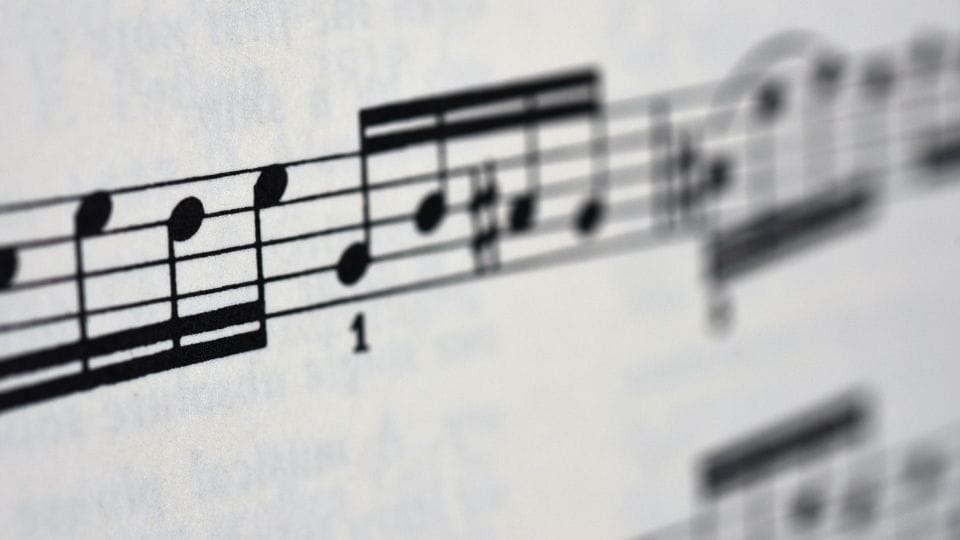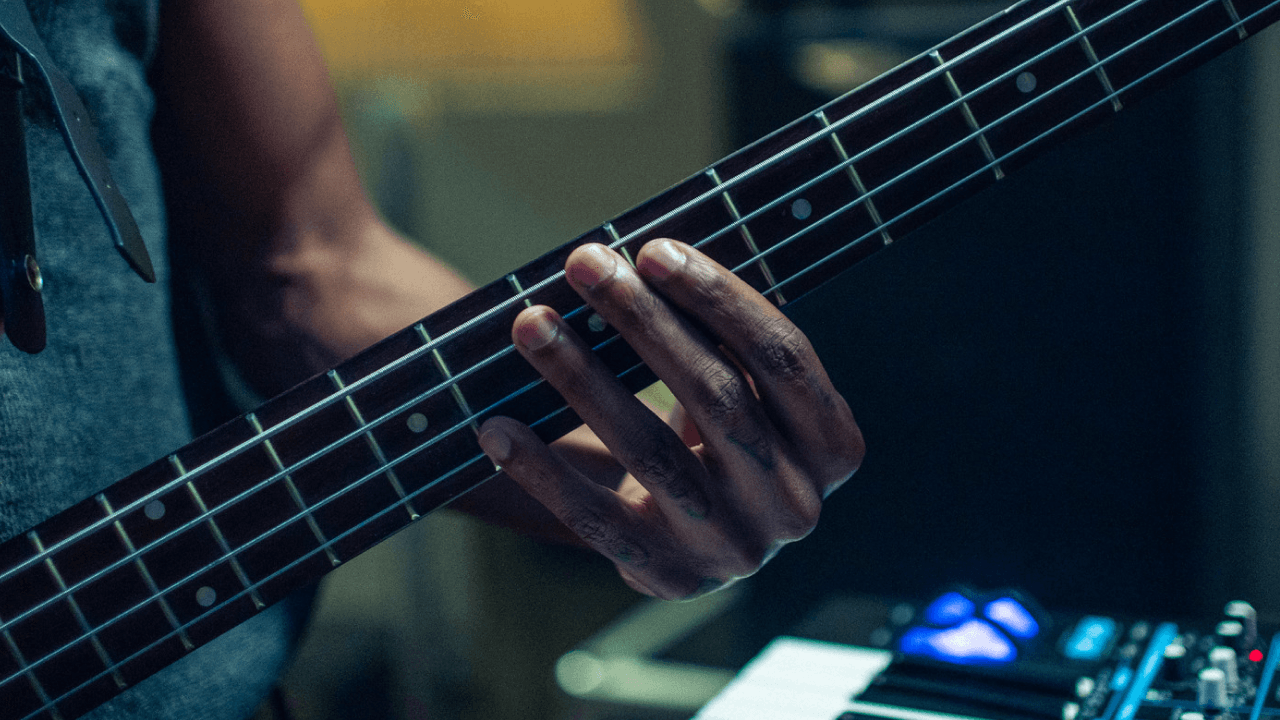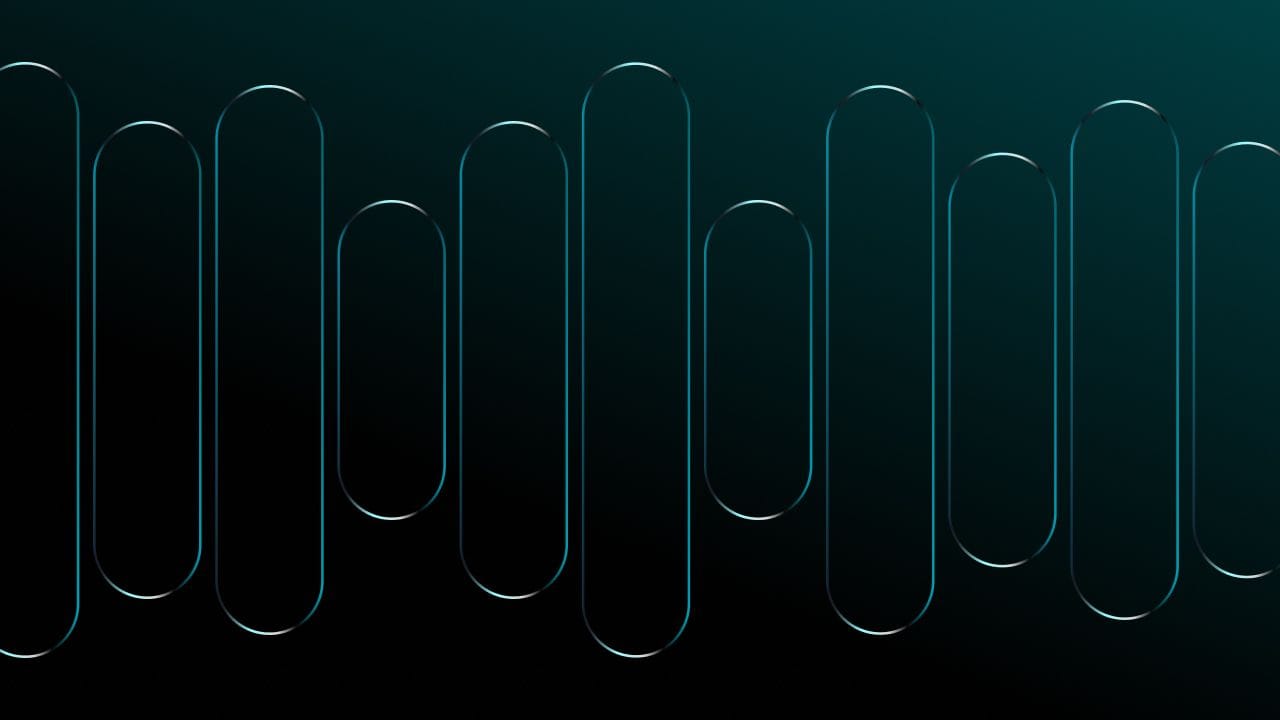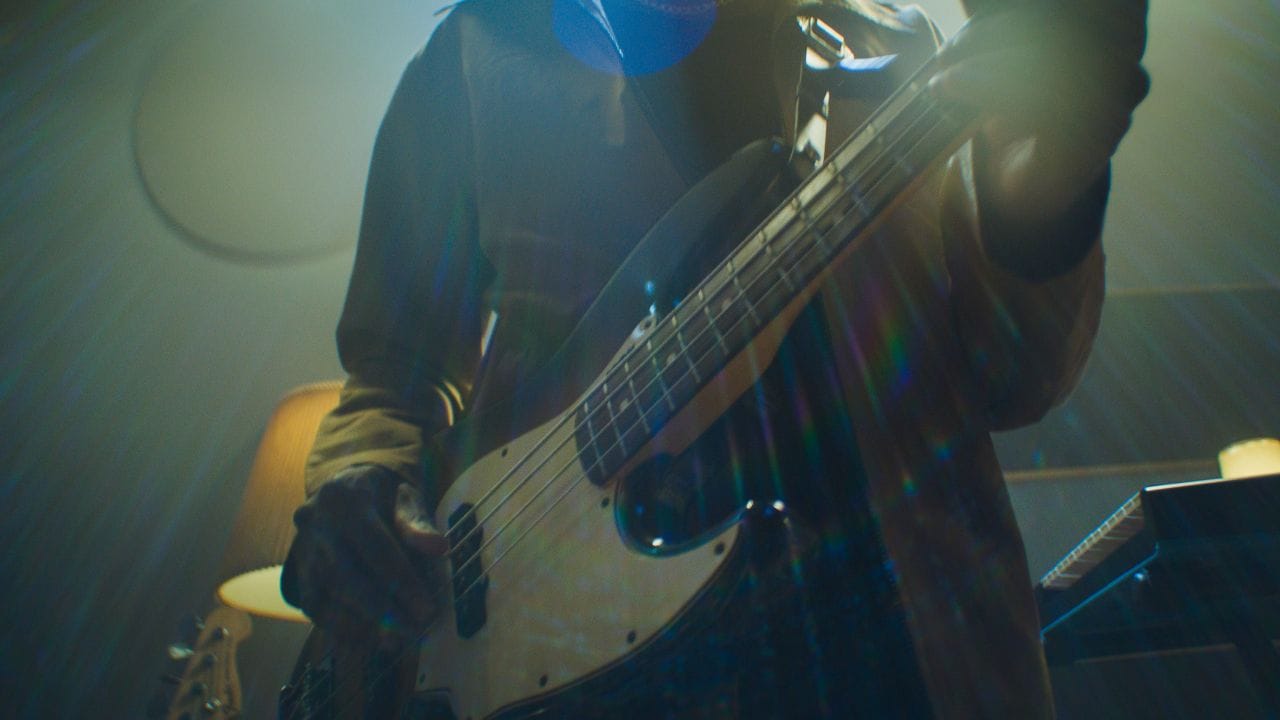Learning how to read sheet music can feel like navigating a new language. At first, the many symbols and theoretical components may seem very intricate. But, much like mastering a foreign language, progressive learning is key.
This comprehensive guide will help you with the essentials — and a little more. Read on!
What are musical notes, and how do they work?
Before you can read music, you need to understand what exactly is being written. That’s where music notes come in.
Each note represents a sound — more specifically, its pitch (how high or low it sounds) and its duration (how long it is held). In Western music, there are seven natural notes, named with the letters A to G. They repeat in cycles across different octaves.
Here’s how they translate into solfège:
| Letter | Solfège |
|---|---|
| C | Do |
| D | Re |
| E | Mi |
| F | Fa |
| G | Sol |
| A | La |
| B | Ti |
A helpful way to visualize this system is by looking at a piano. The white keys are the seven natural notes, and the black keys are the five altered notes, together creating the 12 distinct pitches in each octave. The note C always sits just to the left of the group of two black keys, making it a common reference point.
To adjust pitch, we use accidentals. Sharps (#) raise a note by a half step, while flats (♭) lower it.
A half step (also called a semitone) is the smallest interval in Western music — for example, the distance from E to F or B to C. A whole step (or whole tone) equals two half steps (like C to D).
These 12 notes repeat across different octaves, which are pitch ranges. The same note name (such as A or G) can appear in higher or lower octaves.
Middle C is a key reference in sheet music, bridging the treble and bass clefs. On a piano, it's the fourth C from the left (labeled C4), with higher/lower octaves numbered sequentially (e.g., B3, C5).
What are the basics of reading sheet music?
Sheet music is a written representation of music. Elements like rhythm, timbre, dynamics, and pitch make up the musical framework. Understanding them requires knowledge of basic music theory, along with the ability to read symbols representing different components. The basic ones include clefs, staves, lines, spaces, and time signatures.
The staff
The musical staff is the starting point for learning to read music notation. It has 5 horizontal lines and 4 spaces, and all those are placeholders for musical notes.
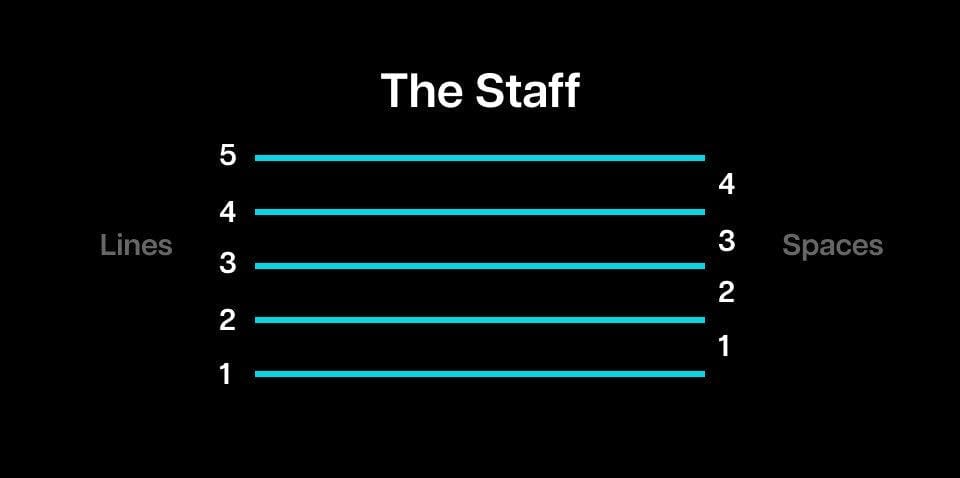
The lines and spaces of the staff are counted from bottom to top — so the bottom line is the first line. Each line and space corresponds to a specific musical note, which is determined by the clef.
The Grand Staff
Now that you understand what a musical staff is, grasping the concept of the grand staff is a no-brainer. It simply combines two staves, one positioned above the other. In this case, a brace connects the staves.

Treble clef notes
The clef sets the stage for reading notes on a staff, pointing out their pitch range. There are two clefs - treble and bass:
- The notes in the spaces and lines of the treble clef have a higher pitch. It’s also known as the G-clef since its curly part wraps around the second line — which represents G in a treble staff;
- The bass staff’s notes have a lower pitch, often used for lower registers.

Now, remember the grand staff? When you come across it, the top staff usually contains the treble clef. The bottom one will likely have the bass clef.
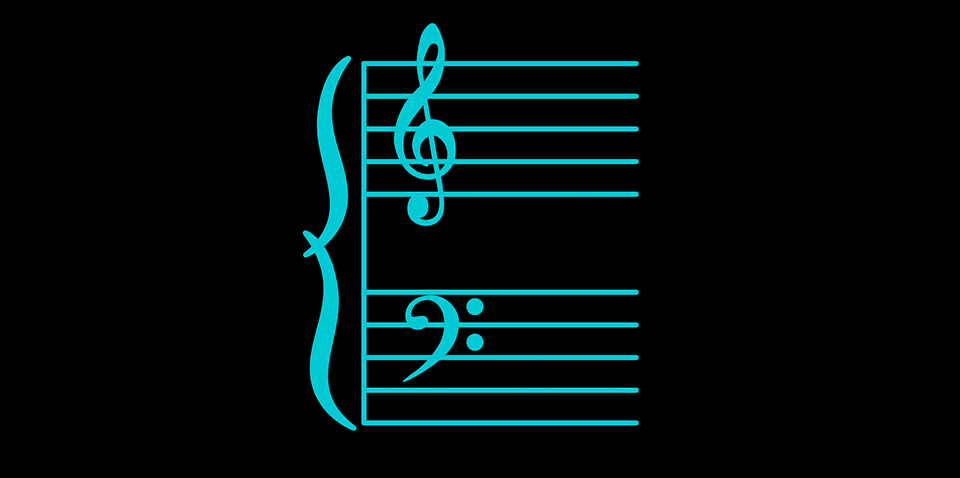
The upper G-clef is either for higher-pitched instruments or for the right hand of a piano player. The bottom F-clef is for lower-pitched instruments or a pianist’s left hand.
The combination of the two staves allows for the notation of a broader range of pitches. That makes it particularly useful for piano pieces, which span a broad set of notes.
The note parts
Notes are among the main sheet music symbols, and knowing their parts and what they mean is crucial for you to read music notes. These parts include:
- Noteheads;
- Stems;
- Flags.
Noteheads can be filled or open. Filled noteheads indicate shorter note durations, while open ones convey longer durations.
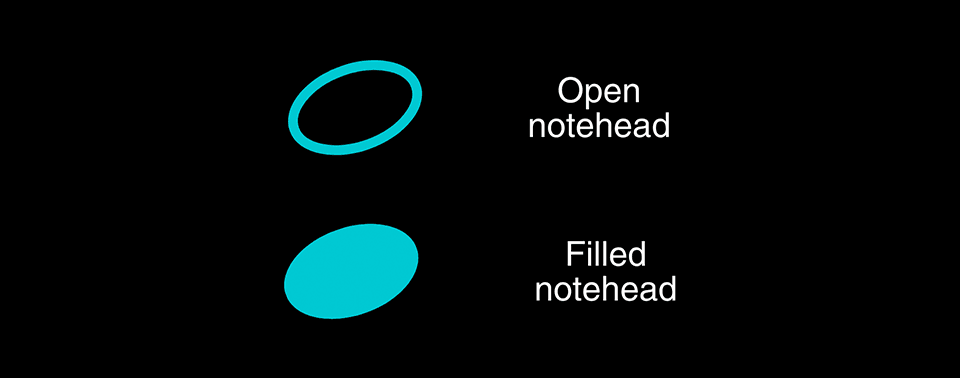
The stem is a thin vertical line attached to the notehead. It’s positioned on the right side when pointing up and on the left side when facing down. But don’t worry: the direction of the stem does not affect the note. It just enhances readability and reduces clutter in musical notation.
Occasionally, a musical note will also have a flag — a curved stroke attached to the stem.
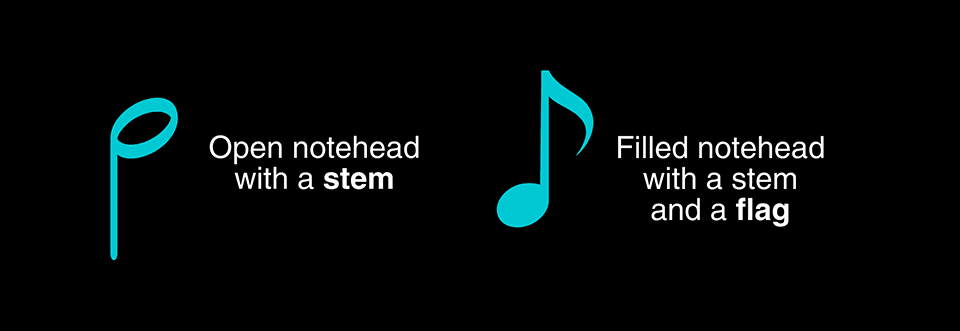
Measures, bar lines, and time signatures
A measure organizes music visually into rhythmic units. The time signature at the start determines the number of beats in a measure. But put a pin in that: let’s cover bar lines first.
A bar line is drawn vertically on the staff to separate measures. It splits the music into sections, setting boundaries for the measures.
Now, back to the time signature. It looks like a fraction, consisting of two numbers placed on top of each other:
- The top number tells you how many beats are in each measure;
- The bottom number indicates the type of note that represents one beat.
For instance, in a 4/4 time signature, there are four beats per measure, and a quarter note represents each beat.

Music notes on the lines and spaces
Knowing how to read notes on sheet music might seem tricky initially, but it’s easier than it looks.
From bottom to top, the treble clef notes for the lines are E, G, B, D, F; and the space notes are F, A, C, E.

The spaces, in this case, are easy to memorize since they spell out the word face. But many people use acronyms to remember sheet music notes. For the G-clef, common ones are:
- Every Good Boy Deserves Fudge;
- Elvis’ Guitar Broke Down Friday.
In the bass clef, the line notes are G, B, D, F, A, and the spaces are A, C, E, G.

Some F-clef acronyms are:
- Good Boys Deserve Fudge Always (lines);
- Good Boys Do Fine Always (lines);
- All Cows Eat Grass (spaces).
Ledger lines
Now and then, ledger lines may appear above or below the staff. These extra lines represent higher or lower notes, respectively.
For instance, middle C is on a ledger line between the bass and treble clefs.

Truth be told, there can be an infinite number of ledger lines. But using more than three can make reading tricky — so switching to a different staff is better. Besides that, ledger lines are useful for reading more notes without constantly changing clefs.
Rhythmic notation
Musical notes can have different durations and rests, and rhythmic notation is how the timing of that sequence is communicated. It uses a set of musical symbols to showcase how long to hold each note and when to rest.
Note values
The value of a note is basically an instruction on how long it should last. Besides whole notes, there are half, quarter, eighth, and sixteenth notes, for example.
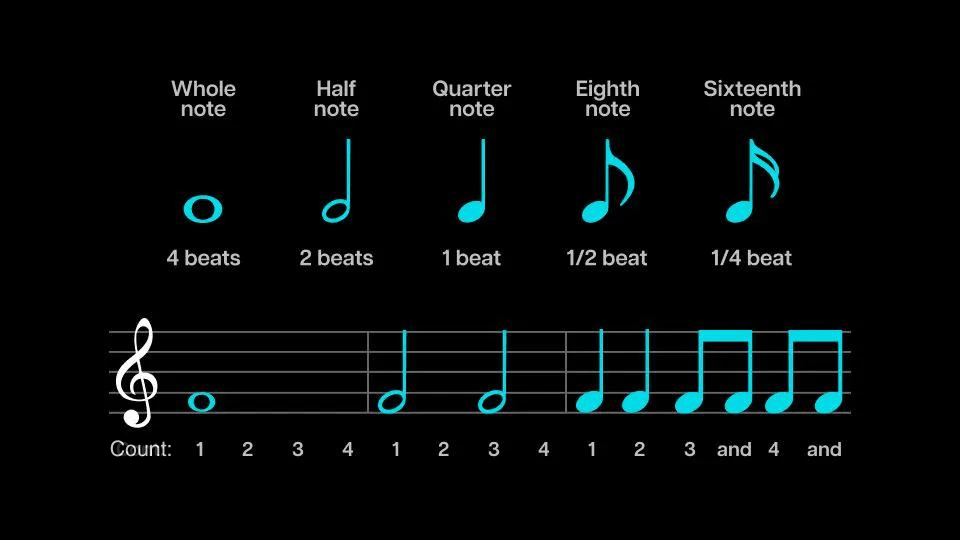
Take playing the guitar, for instance. In a count of 4, a whole note is played once and held for 4 counts. On the other hand, a quarter note is played 4 times within those same 4 counts.
Rest symbols
The rest symbol sits either above or below the middle line of the staff, depending on the type of rest. Common types are:
- Whole rest: a rectangle positioned below the middle line of the staff, like an upside-down hat;
- Half rest: a rectangle placed above the middle line of the staff, resembling a hat;
- Quarter rest: a symbol shaped similarly to the number 7, reaching above the center line;
- Eighth rest: a sign that also resembles a 7 and sits above the center line, but with an additional flag-like mark;
- Sixteenth rest: a symbol that’s similar to the eighth rest, but with two flag-like marks. This one is also placed above the middle line.
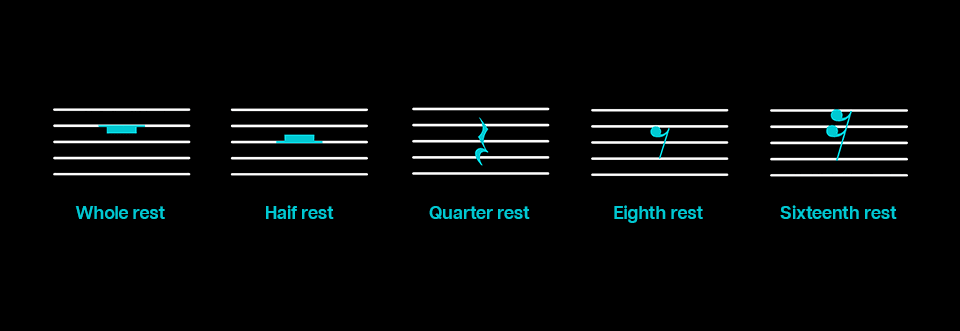
Key signatures
Music key signatures are clues written at the start of a piece. These hints let musicians know which notes should sound slightly different as they play.
Also called accidentals, they include sharps, flats, and naturals.

Accidentals are placed before the note they affect. These signatures change the other notes within the same measure from that point on. They shouldn’t alter notes in the next measure — unless there’s a tie.
Ties are like glue for musical notes. When you see two of them tied together, you’re supposed to hold a note across measures.

Tips to learn how to read sheet music
Learning how to read sheet music requires a multi-faceted approach. It entails deciphering the visual language and converting it into rhythms and melodies.
That process also means pairing intellectual skills with motor coordination on instruments. Singers, besides maneuvering pitch accuracy and dynamics, have to coordinate sight-reading with vocal apparatus control.
Next, you can find tips and insights on the learning process. These are broken down into beginner, intermediate, and advanced stages.
Beginner stage: foundation, memorization, and rhythm
First, you need to grasp the basics of music notation. This includes the staff, clefs, measures, basic symbols, and time signatures. Start by focusing on small music sections, and work your way up to larger ones bit by bit.
Additionally, it’s a great idea to use mnemonic devices to help remember the details. Those shortcuts include acronyms, acrostics, songs, rhymes, chunking, and association.
After ensuring a strong foundation, move on to the other topics we previously covered:
- Understand and memorize music notes on lines and spaces, including ledger lines. Practicing note identification with flashcards or note-naming apps is one suggestion. Plus, test yourself frequently to reinforce memorization;
- Learn the basic values of whole, half, quarter, and eighth notes, as well as their corresponding rests. You can practice counting rhythms aloud and clapping to internalize the patterns. Here, we strongly recommend using a metronome;
- Begin learning accidentals from common major and minor keys. On that note (pun intended), we suggest practicing the major and minor scales linked to each key signature.
Speaking of scales, here’s a pro tip: use the circle of fifths as a reference.

Intermediate stage: expansion, expressiveness, and precision
Build on the basics by:
- Practicing minor and major scales in different keys;
- Exploring chord construction, symbols, and reading charts;
- Consciously applying dynamics and articulations, perceiving their impact on musical expression;
- Gaining more knowledge of common tempo markings, with click tracks for timing refinement;
- Navigating complex time signatures, clapping and counting along as well.
Advanced stage: sophistication and proficiency
As an advanced reader:
- Explore syncopation and irregular rhythms, practicing sophisticated elements in isolation;
- Read scores with multiple instruments, progressing gradually in complexity;
- Learn different types of scales, like harmonic and melodic minor;
- Train your ears, challenging yourself without visual aids;
- Improve your sight-reading by progressively increasing the tempo while reading and playing;
- Join ensembles for collaboration, paying close attention to balance and dynamics.
Why learn how to read music?
Serving as a universal language, sheet music is a reliable collaborative tool for musicians. This fosters clear communication, regardless of the instrument or genre.
Learning how to read sheet music sharpens analytical abilities and allows for an in-depth understanding of musical structure. It also favors a more insightful rendition of each song. For composers and arrangers, reading skills are significant, letting them document and communicate musical concepts.
Additionally, musical scores may provide historical and cultural insights. Annotations, marks, contextual factors, and creative influences can all reflect that information. For example, a piece of sheet music for a Bach composition reflects the meticulous use of ornamentation and articulation markings that prevailed in the Baroque period.
Benefits for the brain
Figuring out how to read sheet music doesn't only sharpen your musical skills. It’s also quite a workout for your brain, offering cognitive benefits that resonate well beyond the notes on the page:
- Memory enhancement: learning to recognize and remember music notation symbols and patterns does wonders for your memory;
- Concentration boost: the intricate task of deciphering music sheets improves focus and nurtures a keen eye for detail;
- Cognitive flexibility: simultaneously reading and playing enhances your brain’s ability to multitask;
- Pattern recognition: this skill is also improved by spotting and interpreting patterns, which benefits other areas of cognition;
- Spatial intelligence: mapping notes and their relationships on staves build up your understanding of space and form;
- Problem-solving: navigating complex musical phrasing strengthens problem-solving skills and promotes creativity in finding solutions;
- Neuroplasticity: learning and adapting to new pieces increases your brain’s capacity for change and fosters new neural connections.
How long does it take to learn to read music?
Everyone’s path to becoming proficient in sheet music is unique. Factors like musical background, practice diligence, and the intended complexity level definitely play a role in the amount of time needed.
It can take a few months to get a hang of the basics when starting from scratch. But, to confidently navigate complex pieces, you might need years of focused learning and practical training.
Harping on the same string as before: the process is akin to learning a language. Proficiency builds over time with steady practice and study. Instead of rushing it, enjoy the process and be patient with yourself.
With a little effort and a structured approach, we’re confident you’ll learn how to read sheet music for good. And, once you do, you have opened the door to a brand-new world.
Want more tips to bridge the gap between where you are and where you want to be? Find out how to establish and maintain a music practice routine!
